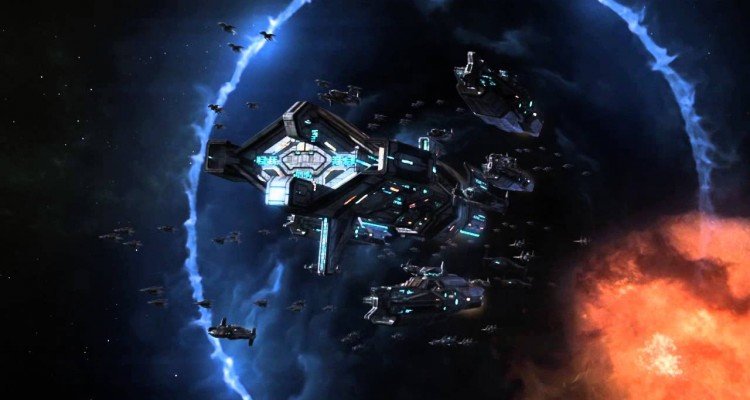It’s hard to say if Galactic Civilizations III has good timing or not. On the one hand, the series debuted in 2003 and hasn’t had an update since 2006’s sequel. So maybe it’s due. On the other hand, juggernaut series Sid Meier’s Civilization just announced a new space-focused edition for fall 2014. That’s some pretty steep competition in the spacefaring turn-based strategy space, but Galactic Civilizations is no rookie.
Galactic Civlizations III is merely in alpha now, so don’t expect anything even close to a complete experience. In fact, much of a playthrough of the game in its current state is about bumping up against features that aren’t even playable yet. Fans of grand-scale turn-based-strategy games will instantly recognize the mechanics skeleton: manage production nodes and move units on a grid of hexagonal tiles. Build improvements and units at these nodes, and click a button to end your turn, giving the other players their turns. Your economy is about how many turns it takes to accomplish everything from manufacturing a scout, to building a spaceport, to researching xenofarming.
While Civ fans will find the general concept familiar, the most noticeable difference is the nodes are entire planets instead of cities, and the world geography is nebulae, extrasolar star systems, and asteroid fields instead of rivers, oceans, and mountains. Colonization must happen on habitable planets, which means outposts can’t pop up just anywhere – but also more intense and direct competition for that resource. Expansion is about finding those habitable planets, but space stations can go anywhere. There is less emphasis on exploration for just the right spot on a river or a coastline for a port city or industrial center, and the planet’s production advantages are not even visible before you colonize it. I can infer from visible but unavailable features that networks of trade routes and space stations for military fleets will be what will ultimately determine the geography of the game.
In space, there is much less in the way of obstacles and ideal geographic spots, so I quickly discovered that exploration in the early game requires much less attention. In fact, the game makes it pretty easy to automate from a big-picture standpoint, sending scouts and surveyors happily and boldly going where no man has gone before, and even checking out searchable debris fields and artifacts when they can. Actually, I found a de-emphasis on micromanagement to be a pretty consistent theme, even with just the alpha version of this game.
In its current state, a game only consists of a 1 v 1 with a CPU opponent, and so features in trade, diplomacy, and cultural influence aren’t even implemented yet. The several games I’ve played are almost entirely about the military, which boils down into the smashing together of fleets. Galactic Civilizations III wars are fought by assembling individual units onto a single tile, thereby making a fleet whose strength and attributes are more or less the sum of its parts. There are three different kinds of weapons and defenses and so it’s possible for a smaller fleet to beat a larger one if the tech, weapons, and defenses are all to the smaller fleet’s advantage, but it’s not very difficult to make your fleet well rounded enough so that it just becomes a numbers game.
You’ll want the industrial capacity to pump out those space fighters and battleships quickly, which is actually another reason big-picture automation is a plus. It’s easy to queue up what will be an entire fleet complete with a diversity of space superiority fighters and transports for planetary invasion, while another planet works on building the space stations you need to create a militarized border. The menu makes it easy to see what each planet is working on in case you need to step in and change on the fly.
“Ideology” takes the role of what the Civ games call social policy, except it’s done with a bit of a twist. You don’t entirely choose your ideology, your in-game choices give you points in each of three ideology trees: benevolence, pragmatism, and malevolence. Build up enough points in a tree and you can choose one of several passive boosts for your civilization. It’s not necessarily easy to predict the effects of each tree: all three can arrive at influence and toughness boosts in their own way. In the alpha, these choices come when exploring a new planet or discovering a floating artifact: do you proceed cautiously and carefully with the safety of your personnel, or do you kick down the door in the name of getting a +5 to your science?
Galactic Civlization III‘s success will hinge on how well the game scales up and how well the less overtly militaristic features flesh out. If you’re interested in this alpha, keep in mind that its purpose is more to stoke your imagination for what the game might be than to deliver a mind-blowing gaming experience in the here and now. If this game can interest players in a galaxy’s worth of diverse spacefaring race competing with the best of their might, charisma, and guile, then we might see an interesting space war between turn-based strategy games this fall.




